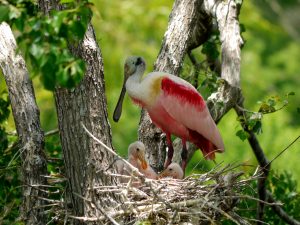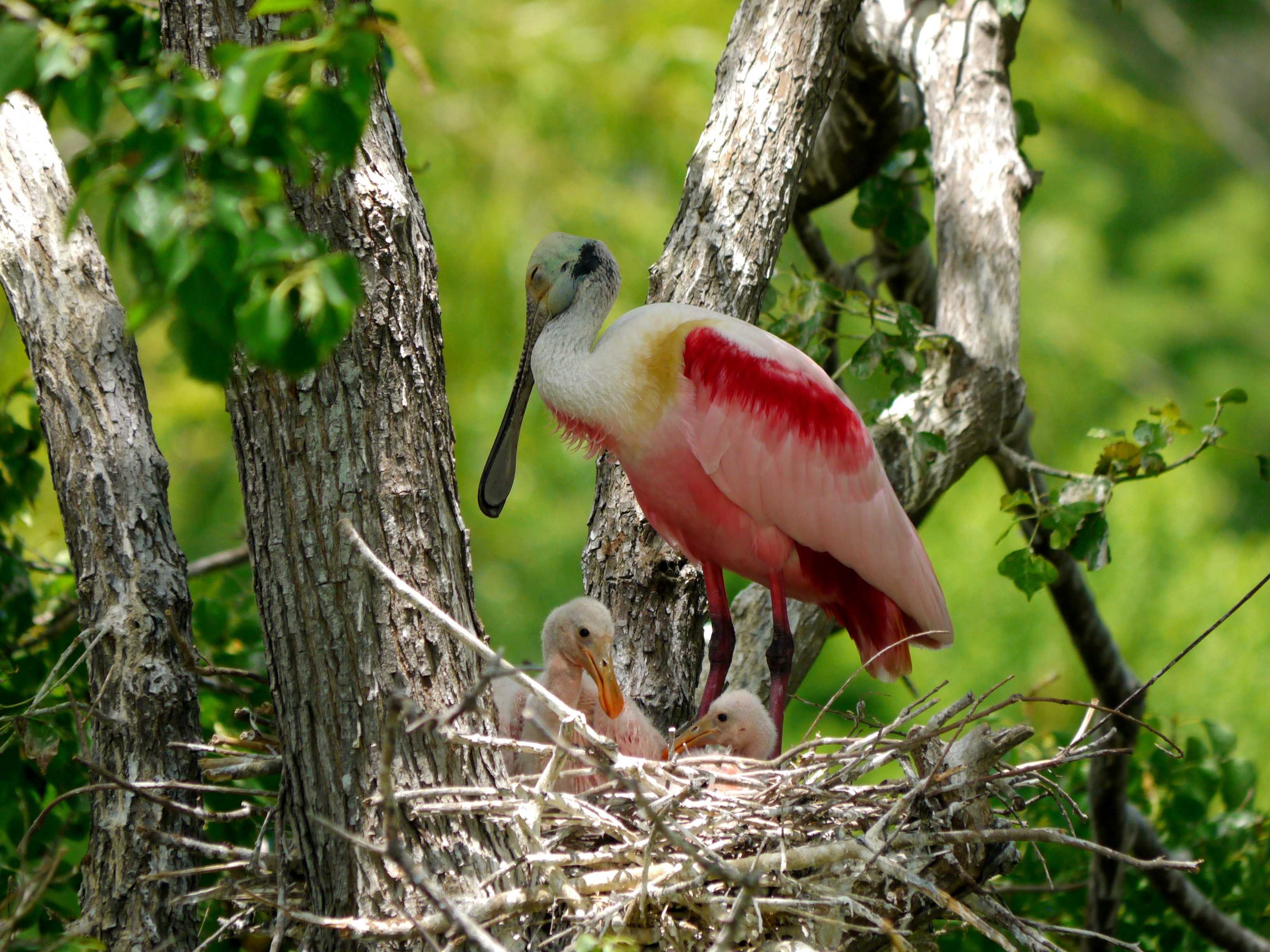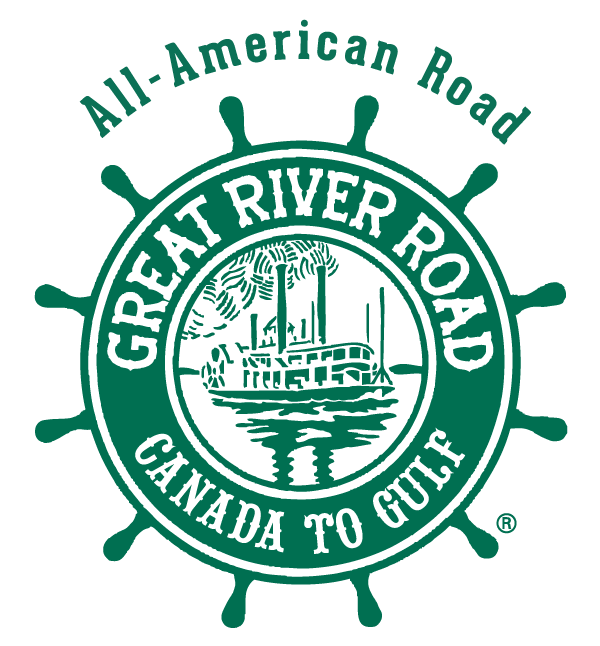
Roseate spoonbill
The Great River Road is one of the world’s premier spots for birding. The road traces the Mississippi Flyway, a migration route followed by 40 percent of North America’s waterfowl and shorebirds. The Great River Road is flanked by vast refuges, expansive forests and beautiful parks that provide rich habitat and protection for these beautiful creatures.
Travelers on the Great River Road have the opportunity to encounter an abundance of species and there are endless places to relax and take in the beauty of the flyway’s birds.
Here are some great places to start a birding adventure on the Great River Road:
Itasca State Park. The home to the headwaters of the Mississippi River, Itasca State Park in Minnesota, hosts birds in its boreal forests and mixed hardwoods. Established in 1891, Itasca State Park is Minnesota’s oldest park. With 222 species found here, it’s also one of Minnesota’s premier birding locations.
Reelfoot Lake State Park. Located in the northwest corner of Tennessee, Reelfoot Lake was created by a series of earthquakes in the early 1800s and today is a magnificent wildlife viewing and birding location. You’ll find many varieties of shore and wading birds here and white pelicans and eagles pay seasonal visits to the park.
National Eagle Center. Want to get up close and personal with an eagle? Pay a visit to Wabasha, Minn., where you can meet bald and golden eagles at daily demonstrations or take a look at eagles perched above the Mississippi River from the observation deck.
Dale Bumpers White River National Wildlife Refuge. This refuge—located in southeastern Arkansas—was created in 1935 specifically to protect migratory birds. Birders can find countless species among the beautiful forests and lakes.
Clarks River National Wildlife Refuge. In western Kentucky near Benton, this 8,500-acre refuge contains bottomland hardwood forests used by over 200 species of neotropical songbirds for a migration stopover spot or for nesting.








